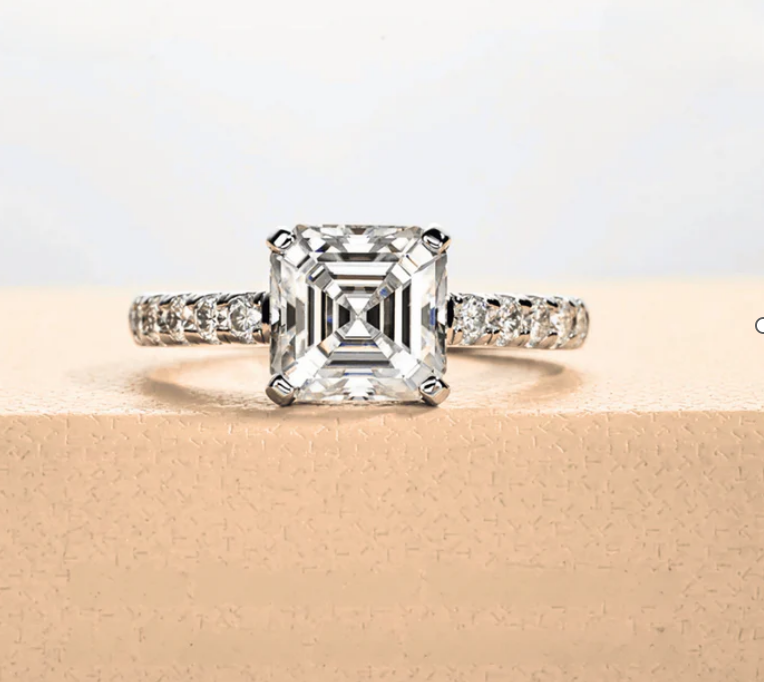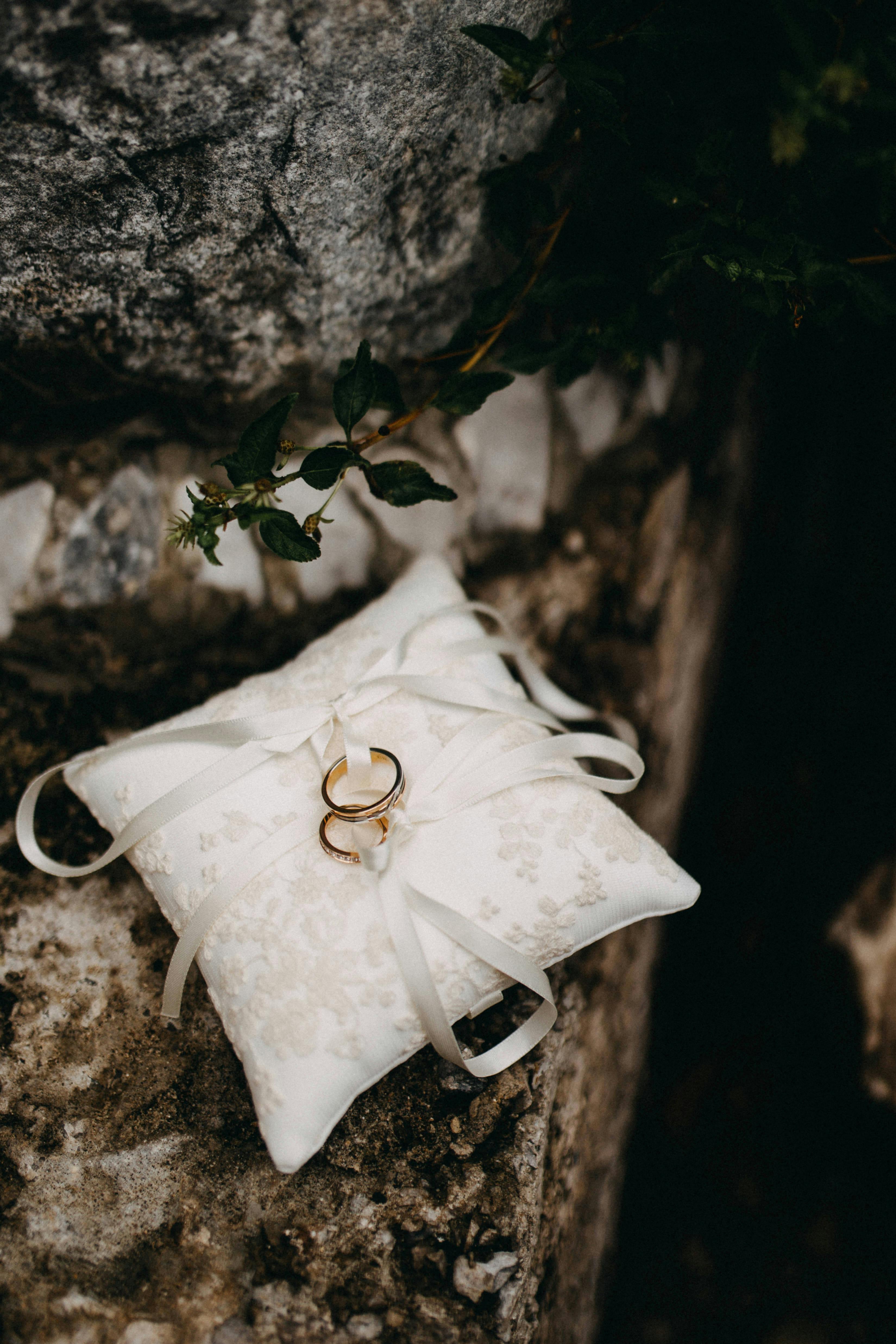Article: Wedding Ring on Right Hand: Cultural Significance and Meanings

Wedding Ring on Right Hand: Cultural Significance and Meanings
Different cultures have their own traditions and meanings when it comes to wearing rings. In some places, a wedding ring on the right hand symbolizes loyalty and goodness in marriage, while in others, it stands for respect and power. These variations reflect long-standing customs and beliefs that have developed over time.
Key takeaway: Knowing the meanings behind wearing a wedding ring on the right hand can help couples make informed decisions about their ring choices. Whether driven by cultural significance or personal preference, the choice of ring placement allows individuals to express their unique values and commitments. This is especially relevant when considering different styles of rings such as those from the XVI Latorre men's range or exploring options like the elongated cushion style. Moreover, for couples looking to make a significant purchase during events like Black Friday, understanding these cultural nuances can aid in making more personalized choices.
Historical Origins of Wedding Rings
Wedding rings trace their roots back to ancient civilizations, where they served as potent symbols of love and commitment. These early cultures imbued rings with deep meanings that have endured through the centuries.
Ancient Egypt
In Ancient Egyptian culture, rings were emblematic of eternity. The circle, with no beginning or end, symbolized an endless cycle, mirroring the eternal nature of love and life. Egyptians often crafted these rings from braided hemp or reeds, later transitioning to more durable materials like bone, ivory, and leather.
Vena Amoris
The concept of the "vena amoris," or the vein of love, emerged from the belief that a vein ran directly from the fourth finger of the left hand to the heart. This idea significantly influenced ring placement traditions in Western cultures, reinforcing the left hand as the traditional site for wedding rings. However, this anatomical misconception did not deter its symbolic power.
Ancient Rome
Rings in Ancient Rome held distinct significance. Romans initially used iron to forge simple bands known as "annulus pronubus." These iron rings symbolized strength and permanence—traits deemed essential for a lasting marriage. Over time, wealthier Romans began using gold and other precious metals to craft more elaborate rings.
Symbolism Across Civilizations
The symbolism attached to wedding rings varied across ancient societies:
- Egyptians: Eternal love and continuity.
- Romans: Strength, commitment, and social status.
- Greeks: Adapted Egyptian customs but added their mythological elements.
Understanding these historical origins provides valuable context for why certain traditions persist and how they have evolved over time. This rich legacy influences contemporary practices and cultural norms surrounding wedding ring placement.
Today, wedding rings come in various styles and materials. For instance, XVI Latorre offers a stunning collection of radiant wedding rings, including unique options like Moissanite bracelets that can serve as beautiful alternatives or additions to traditional wedding jewelry. Additionally, XVI Latorre also provides a guarantee on their products, ensuring quality and customer satisfaction.
Cultural Customs Surrounding Right-Hand Ring Placement
Overview of Right-Hand Ring Customs Across Different Cultures
Wearing a wedding ring on the right hand is a tradition observed in various cultures around the globe. In many regions, the choice of which hand to wear a wedding ring on is deeply rooted in historical and cultural beliefs.
Significance of the Right Hand in Eastern European Traditions and Orthodox Christian Practices
In Eastern Europe and among Orthodox Christians, placing the wedding ring on the right hand holds significant meaning. The right hand is often associated with virtue, honor, and authority. In these cultures:
- Eastern European Traditions: Countries like Russia, Poland, and Greece see the right-hand placement as symbolizing marital fidelity and moral integrity.
- Orthodox Christianity: For Orthodox Christians in Greece and Russia, wearing the wedding ring on the right hand underscores the sanctity of marriage vows and aligns with religious teachings that emphasize the right hand's symbolic importance.
Specific Countries Where Right-Hand Ring Is Customary
Several countries have distinct customs regarding which hand bears the wedding ring:
- Russia: It's common for both men and women to wear their wedding rings on their right hands.
- Germany: Couples often switch their engagement rings from the left to the right hand during their wedding ceremony.
- Spain: Many Spanish couples wear their wedding rings on their right hands as part of traditional practices.
- Colombia: Similar to Spain, Colombian couples frequently follow this custom.
In contrast, Western countries such as the United States, Canada, and the United Kingdom typically place wedding rings on the left hand. This practice is influenced by historical beliefs in the "vena amoris" or "vein of love," thought to run directly from the heart to the fourth finger of the left hand.
Comparison with Western Countries Using Left-Hand Placements
While Western traditions favor left-hand placement due to symbolic reasons tied to ancient Roman customs and anatomical mythology, other global practices offer a rich tapestry of meanings:
- Western Countries: Left-hand placement symbolizes a direct connection to one's heart via the "vena amoris".
- Eastern Traditions: Right-hand placement emphasizes moral virtues, religious significance, and cultural heritage.
Understanding these diverse customs provides valuable insight into how different societies view commitment and marriage.
If you're planning to surprise your partner with a beautiful engagement ring that aligns with these cultural customs or personal preferences, it's essential to know their ring size. You can learn some discreet techniques to determine your partner's ring size without them knowing.
When it comes to selecting a ring, options like an Emerald-Cut 3ct Moissanite Half Pave Ring or a Princess-Cut 1.2ct Moissanite Channel-Set Ring could be perfect choices. These rings not only signify commitment but also encapsulate elegance and luxury.
Symbolic Meanings of Wearing a Wedding Ring on the Right Hand
The right hand holds deep symbolic meanings in many cultures, especially when it comes to wearing wedding rings. In various traditions, the right hand is associated with qualities like honor, authority, and justice.
Cultural Symbolism
Eastern European Traditions
In countries like Russia and Poland, the right hand symbolizes marital fidelity and the path of virtue.
Orthodox Christianity
For Orthodox Christian practices in Greece and Russia, the right hand signifies sanctity and the sacredness of marriage vows.
The "Vena Amoris" Myth
Contrary to the popular belief about the left hand's "vena amoris" or "vein of love," some cultures prefer the right hand due to its own set of symbolic meanings. The circle of the wedding ring itself represents eternity and an unbroken bond of love and commitment.
Rings Representing Love and Commitment
Placing a wedding ring on the right hand can also symbolize:
- Strength: In some cultures, strength and permanence are associated with the right hand, making it an ideal choice for a symbol as enduring as a wedding ring. A striking example is this Men's 3 Stone, 4 Carat Moissanite Round Cut Engagement Ring, which features three Moissanite stones radiating unmatched brilliance.
- Respect and Authority: Particularly in Eastern Orthodox traditions, placing the ring on the right hand aligns with themes of respect and authority within a marital relationship.
Couples may also choose wedding bands that symbolize their eternal love, such as an emerald-cut full eternity Moissanite wedding band. This circle of continuous brilliance represents unending commitment. Alternatively, they might opt for something like an Endless Love Heart Cut Moissanite Eternity Band, which showcases precision-cut heart-shaped Moissanites symbolizing unwavering affection.
By understanding these cultural nuances, couples can make informed decisions that reflect their personal beliefs and cultural backgrounds when choosing which hand to wear their wedding rings on.
Practical Considerations for Choosing Ring Placement
Several factors influence the decision on which hand to wear a wedding ring, especially for left-handed individuals. Comfort and functionality often play a significant role.
Factors Affecting Ring Placement Decisions for Left-Handed Individuals
- Dominant Hand Usage: Left-handed people use their left hand more frequently for tasks requiring fine motor skills. Wearing a ring on this hand could lead to discomfort or damage due to constant use.
- Comfort: A ring on the non-dominant right hand can feel less intrusive and more comfortable during everyday activities.
Practical Reasons for Choosing the Right Hand Over the Left
- Protection: The right hand may offer better protection for the ring in specific environments where the left hand is predominantly active.
- Task Efficiency: Tasks such as writing or using tools can be performed more efficiently without a ring interfering on the dominant hand.
- Personal Preference: Some individuals simply prefer the feel and appearance of wearing their wedding ring on their right hand.
For those considering alternative options, such as a stunning Round 3ct Moissanite Halo Ring, it could be worthwhile to explore how these factors align with personal style and comfort.
Additionally, incorporating beautiful accessories like Emerald-Cut Moissanite Stud Earrings can also enhance one's overall look, whether the wedding ring is worn on the left or right hand. By considering these factors, couples can make informed choices about ring placement that align with their lifestyle and personal comfort.
Types of Wedding Rings and Their Designs
Various Types of Wedding Rings
Wedding rings come in many styles, each catering to different tastes and preferences. Some popular types include:
- Solitaire Rings: Featuring a single prominent gemstone, solitaire rings are timeless and classic. The focus remains on the elegance of one central stone.
- Example: A stunning Two-Tone 3ct Moissanite Solitaire Ring is a perfect blend of classic elegance and modern design. Centered with a beautiful 3-carat moissanite, it offers a unique two-tone design that enhances the stone's brilliance.
- Three-Stone Rings: Symbolizing the past, present, and future, these rings typically showcase three gemstones of matching or varying sizes.
- Eternity Bands: Encircled with continuous gemstones, eternity bands represent everlasting love and commitment.
- Vintage and Antique Rings: Inspired by historic designs, these rings often feature intricate detailing and unique craftsmanship.
- Contemporary Blends: Combining modern aesthetics with traditional elements, contemporary blends offer a fusion of styles for a personalized touch.
Popular Gemstones Used in Wedding Rings
The choice of gemstone significantly impacts the ring's appearance and symbolic meaning. Common options include:
- Diamonds: Renowned for their brilliance and durability, diamonds are the quintessential choice for wedding rings. They symbolize eternal love and strength.
Example: A classic solitaire diamond ring remains an iconic symbol of engagement and marriage.
- Moissanite: Known for its brilliance and affordability, moissanite is an increasingly popular alternative to diamonds. It offers a similar sparkle at a fraction of the cost.
Example: Moissanite engagement rings like the Empress III Ring or the Radiant-Cut 3ct Moissanite Ring provide exceptional beauty without compromising on quality.
- Sapphires: With their rich blue hue, sapphires represent loyalty and wisdom. They are often chosen for their striking color and durability.
Example: Kate Middleton's engagement ring features a stunning sapphire surrounded by diamonds.
Other gemstones such as emeralds, rubies, and amethysts also find their place in wedding ring designs, each bringing its unique symbolism and aesthetic appeal.
The variety in types of wedding rings and the selection of gemstones allows couples to choose pieces that reflect their personal style while adhering to cultural significance.
Rituals and Etiquette Surrounding Wedding Rings
Understanding how ring placement communicates messages about marital status enhances one's appreciation of wedding traditions across cultures. The choice of which hand to wear a wedding ring can signify different stages and aspects of a relationship.
Communicating Marital Status through Ring Placement
Left Hand
In Western cultures like the U.S., Canada, and the U.K., wearing a wedding ring on the left hand typically signifies that the wearer is married. This practice is rooted in the belief that the "vena amoris" or "vein of love" connects directly to the heart.
Right Hand
In several Eastern European countries such as Russia and Poland, as well as in Orthodox Christian traditions, the right hand is preferred for wedding rings. This placement often symbolizes honor, authority, and marital fidelity.
Cultural Etiquette Differences
Orthodox Christians
For many Orthodox Christians in Greece and Russia, wearing a wedding ring on the right hand represents the sanctity of marriage vows.
Western Traditions
In countries like France and Italy, engagement rings are worn on the left hand, with wedding bands added during the ceremony.
Widows and Widowers
In various cultures, transferring a wedding ring to the right hand after a spouse's death signifies continued love and respect while acknowledging a change in marital status.
Non-Traditional Practices
Left-Handed Individuals
Some left-handed people choose to wear their wedding rings on their right hand for practical reasons such as comfort and avoiding damage during daily activities.
Fashion Statements
Modern trends see rings worn on different fingers or hands purely for stylistic expressions rather than traditional meanings. For instance, a stunning option like the Five-Stone 1.5 TCW Round Moissanite Wedding Band could be worn as a fashion statement while still holding sentimental value.
Understanding these nuances helps individuals navigate cultural expectations and personal preferences when it comes to wearing wedding rings.
Embracing Individual Choices: The Balance Between Tradition and Personal Style
Cultural Significance of Wedding Rings
Understanding the cultural significance of wedding rings can help couples appreciate the rich history behind their choices.
- Personal Expression: Modern couples are increasingly personalizing their ring designs to reflect their unique stories.
- Tradition vs. Innovation: While some follow traditional placements due to cultural or religious reasons, others choose more contemporary arrangements.
Encouragement to Embrace Individual Choices
Couples today are encouraged to make decisions based on what feels right for them. Whether it’s choosing a wedding ring on the right hand or customizing a design with meaningful engravings:
- Reflect Personal Beliefs: Rings can symbolize independence, professional achievements, or personal commitments beyond marriage.
- Aesthetic Preferences: The choice between classic solitaires and modern blends allows for a wide range of stylistic expressions.
By embracing these individual choices, couples can balance tradition with personal style, creating symbols that truly resonate with their relationship.
Frequently Asked Questions
Wearing a wedding ring on the right hand can vary in meaning across different cultures. In some traditions, it signifies commitment and love, while in others, it may represent specific religious or cultural customs. Understanding these meanings can help couples make informed decisions about their ring choices.
The symbolism of rings dates back to ancient civilizations such as Ancient Egypt and Ancient Rome. In Ancient Egypt, rings were symbols of eternity, while in Ancient Rome, iron rings were used to signify commitment between partners.
Right-hand ring customs are prevalent in Eastern Europe and among Orthodox Christian communities. These practices often emphasize the significance of the right hand, contrasting with Western traditions where the left hand is more commonly used for ring placement.
In various cultures, the right hand symbolizes love and commitment. Rings worn on this hand can represent a deep emotional bond between partners, reflecting their dedication to one another.
Factors such as left or right-handedness and personal comfort play significant roles in deciding whether to wear a wedding ring on the left or right hand. Left-handed individuals may find it more comfortable to wear their rings on the right due to their dominant hand's activities.
Ring-wearing etiquette varies widely; for instance, in some cultures, wearing a wedding ring on a specific hand communicates marital status. Understanding these differences is essential for respecting cultural norms regarding how and where to wear wedding rings.





